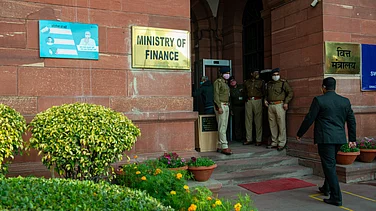
US President Donald Trump has announced an additional 25% tariff on Indian exports.
The new tariff orders were signed just hours before the previous 25% levies were set to take effect.
The new duties will come into force 21 days after the signing of the US President’s executive order.
Intensifying trade frictions with India, US President Donald Trump on Wednesday announced an additional 25% tariff on Indian exports. The move comes amid Washington’s displeasure over New Delhi’s continued imports of Russian oil and defence hardware. With this increase, the overall tariff on most Indian goods—except for a limited exemption list—will rise to as much as 50%.
Trump signed the executive order less than 14 hours before his earlier tariff plan was due to take effect. The new duties, targeting sectors including pharmaceuticals, textiles, and machinery, are likely to further strain bilateral trade relations.
The tariffs will take effect 21 days after the signing, giving India and Russia a short window to negotiate with the US.
The announcement followed Trump’s criticism of India as “not a good trading partner”, coupled with a warning of substantial tariff hikes over its energy dealings with Moscow. He has repeatedly accused New Delhi of indirectly “financing” the Ukraine conflict through its Russian oil purchases—an allegation India rejects, citing its energy security needs.
Earlier, on 1 August, Trump signed an executive order titled Further Modifying the Reciprocal Tariff Rates, raising duties for more than 60 countries, with India facing a steep 25% hike. That order, however, made no mention of the additional “penalty” Trump had hinted at over India’s Russian energy and defence imports.
Goods already in transit are exempt if they arrive before 17 September. The extra duty applies on top of the existing 25% tariffs, although certain products already exempt under US law or earlier orders remain unaffected.
The order also allows the President to modify or expand the tariffs if India or Russia changes its oil trade practices, or if other countries buying Russian oil are identified. US agencies will monitor global Russian oil purchases and may impose similar tariffs on other nations in the future.
“It is a sad day for globalisation and a sad day for the US–India bilateral relationship,” said Nachiketa Sawrikar, Fund Manager at Artha Bharat Global Multiplier Fund. “President Trump wants to punish Russia and apply maximum pressure on Russia’s friends, which includes India at this time. However, he has miscalculated the psyche of the Indian population. Prime Minister Modi and India are not going to give in to this bullying. US consumers will pay higher prices for pharmaceuticals and jewellery exports, while India will need to write off about $50 billion in exports to the US. That is just 0.1% of India’s GDP—Indians will gladly bear that cost because self-respect is priceless.”
The tariffs come after, on Tuesday, India’s Ministry of External Affairs (MEA) issued an unusually sharp rebuttal to the US and the European Union over their “unjustified and unreasonable” criticism of New Delhi for procuring Russian crude oil.
India strongly rejected the accusations, calling them a display of double standards, and highlighted that both the US and the EU continue to trade extensively with Russia. In a statement, the MEA noted that, unlike India, such trade is not a vital national necessity for them. It pointed out that Europe’s trade with Russia spans energy, fertilisers, mining products, chemicals, iron and steel, and machinery and transport equipment. The US, meanwhile, still imports uranium hexafluoride for its nuclear industry, palladium for electric vehicles, and various fertilisers and chemicals.
According to policy think tank GTRI, in 2024, China bought $62.6 billion of Russian oil—more than India’s $52.7 billion.
“Washington avoids targeting Beijing because of China’s leverage over critical materials such as gallium, germanium, rare earths, and graphite, vital for U.S. defence and technology. The U.S. has also overlooked its allies’ trade with Russia: the EU imported $39.1 billion of Russian goods last year, including $25.2 billion in oil, while the U.S. itself purchased $3.3 billion in strategic materials from Russia,” GTRI said of Wednesday.
Adding that the tariffs are expected to make Indian goods far costlier in the U.S., with potential to cut U.S.-bound exports by 40–50%.
“India could think of not buying Russian oil if economically viable, but should not abandon Russian oil purchases simply to satisfy Washington. US may find new pretext to tax India again. India should remain calm, avoid retaliation for at least six months, and recognise that meaningful trade negotiations with the U.S. cannot proceed under threats or mistrust,” it added.
































